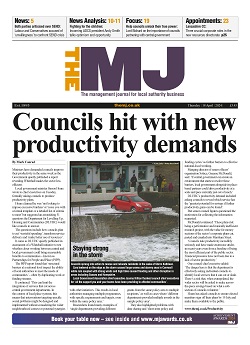One of the most significant drivers behind child vulnerability is a family’s financial situation. Is the family in debt? Can they make ends meet from month-to-month? Are they in secure work?
Despite a clear link between poverty and adverse childhood outcomes, much of the work carried out by children’s services focuses on acute services for children in care, or those at risk of going into care.
While understandable, this means that not enough work is being done on preventative measures that would stop children from reaching this stage of crisis much earlier.
Councils are not able to do this without support. That is why the Children’s Commissioner asked us, at Policy in Practice, to look into the impact of welfare reforms on child vulnerability, to establish what more can be done to prevent children from falling into risk. We found that:
1–Universal Credit broadly benefits families with children. Fifty six per cent of households are better off by £172 per month on average, although 40% are worse off and lose £181 on average per month.
2–The five-week wait for Universal Credit pushes 70% of families from a cash surplus to cash shortfall. Seventy three per cent of families would see their savings completely exhausted at some point during those first five weeks and would need a Universal Credit advance.
3–The Universal Credit advance increases the number of households who face a cash shortfall from month to month, from 11.6% under Universal Credit, to 18.9% once the advance payment is deducted from Universal Credit awards.
4–The two-child limit will ultimately impact 32% of children. When the impact on siblings is factored in, the policy impacts around one million children.
5–The benefit cap affects 2.9% of households with children in receipt of benefits. These families lose £2,832 on average per year.
6–The cumulative impact of welfare reforms is much greater than the impact of each reform on its own. Forty eight per cent of households lose £3,441 on average per year.
These policies are pushing 16% of children who are already living in households facing a cash shortfall deeper into poverty.
The benefit cap – for one child whose parents move into work, eight are closer to destitution.
The impact of the benefit cap goes further than shown in our report for the children’s commissioner. In our evidence to the Work and Pension Committee we compared employment outcomes for capped households against similar households which fell below the cap.
We found that while the policy appears to be a success in some respects, with 21% of households affected by the benefit cap more likely to move into work, it has lost sight of those households living closer to destitution.
Crucially, we found that for every child whose parents have successfully moved into work, eight more children are closer to destitution.
Since the start of the coronavirus pandemic we have been working closely with councils to track the impact of COVID-19 on poverty in near real-time.
Analysing data in this way has allowed us to identify all struggling households, particularly those with children, and target support to prevent crisis.
There is a great deal more local authorities can and should do to better understand the drivers of child vulnerability.
- Locally held administrative datasets can be analysed to identify vulnerable children and target support
- Tools to engage and empower parents can highlight what steps they could take to improve their financial situation. Showing the impact of work, highlighting available jobs, or giving access to social tariffs can have a direct impact on poverty
- Our pioneering pilot with Walsall MBC links datasets from children’s services, adult services, health, police and schools, to ensure contact with multiple services is properly taken into account
- We plan to link incomes related data to other datasets, such as the Children in Care, or At Risk of Being in Care data returns, so we can better understand the causal relationship between poverty and vulnerability
By analysing data in this way we can work together to better understand the links between poverty and childhood outcomes. This will ultimately ensure that more work is being done earlier to avoid children falling into risk or into care.
We welcome interest from other leading local authorities who want to explore how to use data to secure better outcomes for the UK’s most vulnerable children. Contact hello@policyinpractice.co.uk.
Deven Ghelani is chief executive officer at Policy in Practice

